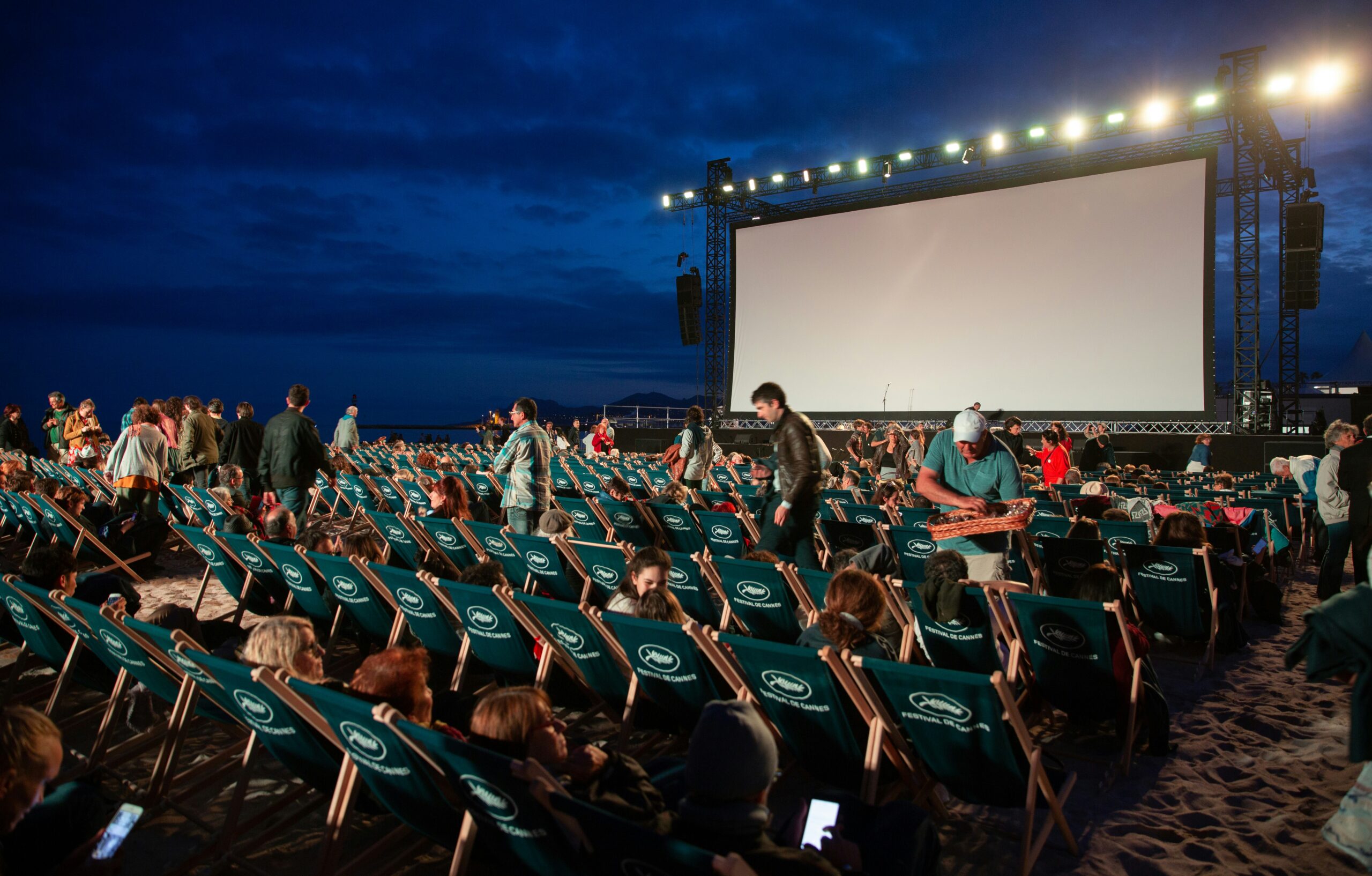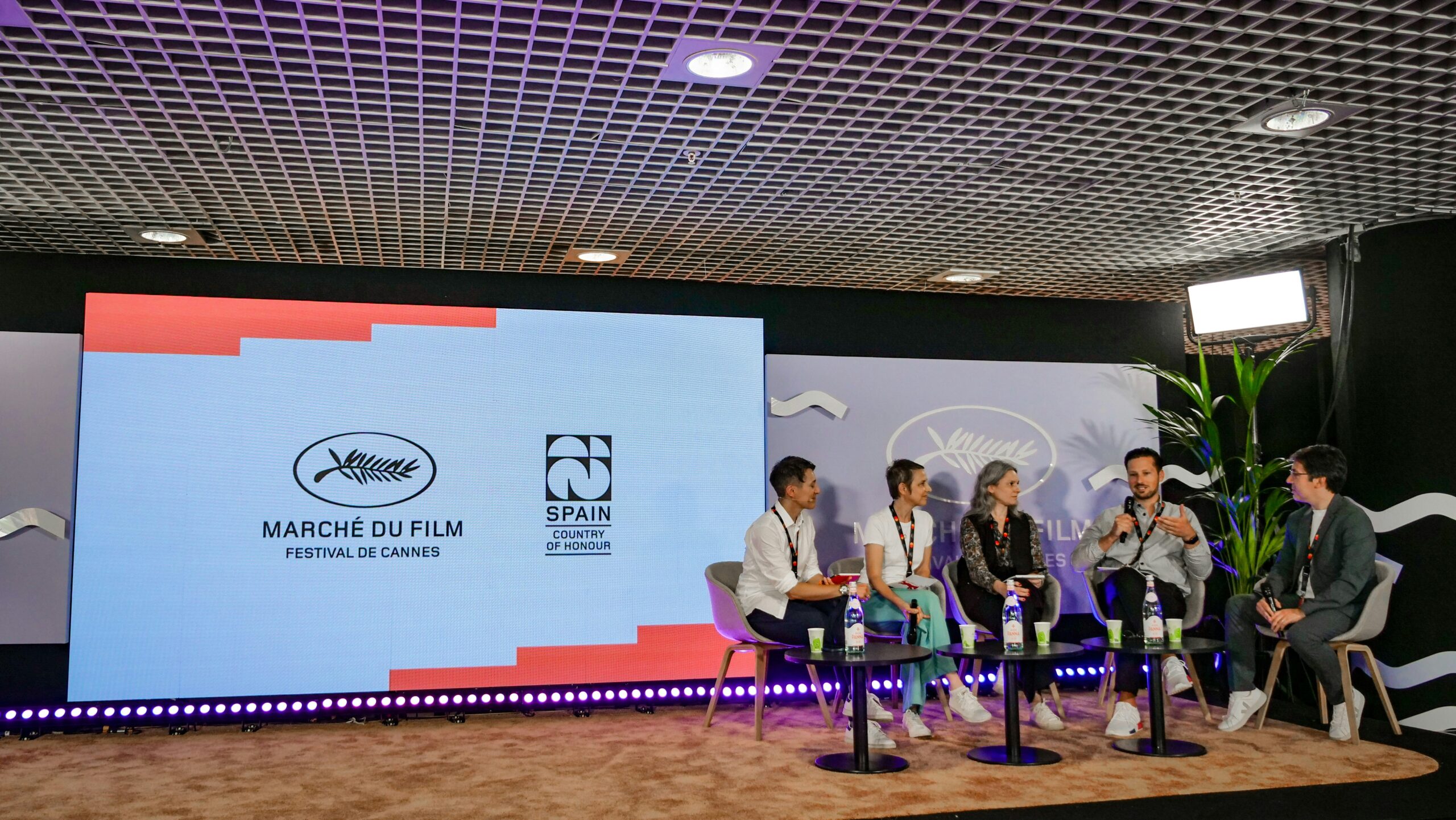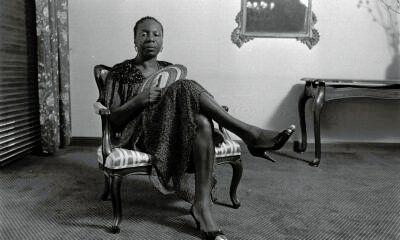Advice
How Film Festivals Boost Emerging Talent

In the glitzy world of cinema, film festivals are more than just red carpets and champagne flutes. They’re the secret sauce in the recipe for discovering the next Spielberg, Scorsese, or Zhao. Let’s roll out the metaphorical red carpet and dive into the data-driven wonderland of how these cinematic soirées turn unknown filmmakers into tomorrow’s Hollywood hotshots:
1. The Exposure Express: Where Hidden Gems Sparkle
Film festivals are like show-and-tell on steroids for filmmakers. A whopping 71% of emerging directors cite festival screenings as crucial for gaining industry exposure. It’s where hidden gems get their chance to sparkle brighter than a vampire in sunlight.
- On average, each major festival screens 200+ films, giving newbies a fighting chance against established names.
- 1 in 5 films find distribution deals at festivals, turning indie dreams into mainstream realities.
- 85% of filmmakers report increased social media following post-festival, because nothing says “I’ve made it” like a surge in Instagram followers.
2. Networking Nirvana: Six Degrees of Separation? More Like Two!
These festivals are Hollywood’s version of speed dating, but instead of swiping right, you’re handing out business cards faster than a Vegas dealer. With an average of 2,500 industry professionals attending major festivals, it’s a schmooze-or-lose situation.
- 63% of filmmakers report making career-changing connections at festivals.
- The average attendee exchanges contact info with 15 new people per day. That’s more numbers than you got in high school!
- 40% of collaborative projects are born from festival meet-cutes. Who knew discussing obscure German expressionist films could lead to your next big break?
3. Feedback Frenzy: Where Egos are Bruised and Brilliance is Born
Q&A sessions are like a filmmaker’s baptism by fire. 82% of festival-goers attend these sessions, offering instant, unfiltered reactions that can make or break a filmmaker’s spirit (and possibly their next project).
- Filmmakers receive an average of 50 audience questions per screening. That’s 50 chances to either sound brilliant or wish for a trap door.
- 75% of directors make changes to their films based on festival feedback. It’s like a real-time focus group, but with more film jargon and fewer free snacks.
- The most common audience question? “What was your budget?” followed closely by “What did that ending mean?” Some things never change.

4. Award-Winning Boost: From Unknown to ‘Next Big Thing’
Getting your film into a prestigious festival is like winning the lottery, but instead of cash, you get instant street cred. Films with festival laurels are 35% more likely to secure distribution. Suddenly, you’re not just some kid with a camera; you’re an “award-winning filmmaker” faster than you can say “And the winner is…”
- The average major festival hands out 20+ awards. That’s a lot of opportunities to practice your surprised face.
- 60% of films winning top prizes at major festivals go on to wider theatrical release. Oscar, here we come!
- Festival award winners see an average 150% increase in industry meeting requests. Suddenly, everyone wants to do lunch.
5. Diversity’s Got Talent: A Global Stage for Unheard Voices
Festivals are championing voices from all corners, proving that great stories can come from anywhere, not just Hollywood backlots. In 2023, 45% of films at major festivals were from underrepresented groups.
- Festivals introduced audiences to films from 100+ countries last year. It’s like a cinematic United Nations, but with better catering.
- 30% of festival programmers actively seek out films from first-time directors. Fresh blood keeps the movie monster alive!
- Diversity initiatives have led to a 25% increase in submissions from underrepresented filmmakers over the past five years. The cinematic melting pot is bubbling over with flavor.

6. Film School 2.0: Learning Without the Loans
Forget stuffy classrooms. 78% of emerging filmmakers attend festival workshops, turning these events into film school on steroids. It’s where budding Tarantinos learn the tricks of the trade without the student debt.
- The average festival offers 30+ educational events. That’s more learning than most of us did in college, and with better networking opportunities.
- 90% of attendees report learning at least one new industry trend or technique. Who knew vertical video would become a thing?
- Workshops cover everything from “Guerrilla Filmmaking 101” to “How to Make Your Indie Film Look Like It Cost Millions (When It Cost Pennies).”
7. The Festival Effect: Where Careers Are Born
Film festivals aren’t just events; they’re career incubators. They’re where dreams are hatched, stars are born, and where you might just witness the birth of the next big thing in cinema.
- 1 in 3 breakout indie hits originated from festival circuits in the last decade. That’s a better success rate than most dating apps!
- Filmmakers who’ve been to festivals are 40% more likely to secure funding for their next project. Apparently, rubbing elbows with the elite is good for the wallet.
- 25% of major studio executives report scouting new talent primarily at film festivals. It’s like “America’s Got Talent,” but for movie nerds.
Conclusion: The Reel Deal
In the end, film festivals are more than just a place to watch movies and spot celebrities trying to blend in with oversized sunglasses. They’re the beating heart of the film industry, pumping fresh talent and ideas into the cinematic bloodstream.
So, the next time you’re at a film festival, remember: that person sitting next to you furiously taking notes might just be the next big name in Hollywood. And if they ask you what you thought of their film, be kind – your words might just shape the future of cinema. Or at least shape their next therapy session.
Grab your popcorn, silence your phones, and get ready for the show. In the world of film festivals, every screening is a potential discovery, every conversation a possible collaboration, and every award a career launcher. It’s where the magic of movies meets the hustle of Hollywood, and the result is pure cinematic alchemy.
Advice
Why Your Phone Videos Look FLAT

Modern smartphones offer incredible video capabilities, but sometimes the footage can look flat, lacking depth and vibrancy. This article explores five practical tips to elevate your phone videos, with a focus on lighting techniques like bounce lighting and natural light, as well as using the highest quality settings available.
1. Optimize Lighting: Bounce Lighting and Natural Light
Lighting is one of the most critical factors in creating visually appealing videos. Here are two effective techniques:
- Bounce Lighting: Bounce light involves redirecting light off a surface (e.g., walls, ceilings, or reflectors) to create soft, diffused illumination. This technique avoids harsh shadows and gives your subject a natural, cinematic glow. For example, bouncing light off the ceiling turns the entire surface into a softbox, wrapping light around your subject evenly. This method works well in small spaces or when you lack expensive modifiers.
- Natural Light: Leveraging daylight is an easy and cost-effective way to enhance your videos. Position your subject facing a window or shoot during golden hours (early morning or late afternoon) for flattering, warm tones. Avoid direct sunlight as it can create harsh shadows; instead, opt for diffused natural light for a balanced look.
2. Shoot in the Highest Quality Available
Always set your smartphone camera to its maximum resolution and frame rate. For example:
- Resolution: Use 4K for sharp details.
- Frame Rate: Choose 30fps for standard motion or 60fps for smoother movement.
Higher-quality settings capture more detail and color information, making post-production adjustments easier.

3. Improve Composition
A well-composed shot adds depth and interest to your videos:
- Use the rule of thirds to position your subject off-center.
- Incorporate foreground and background elements to create layers.
- Avoid cluttered backgrounds that distract from the main subject.
4. Stabilize Your Shots
Shaky footage can ruin the professional feel of your video:
- Use a tripod for static shots.
- Invest in a gimbal or stabilizer for smooth motion during handheld filming.
5. Enhance Color and Contrast in Post-Production
Even with perfect lighting and composition, flat videos may need color grading:
- Adjust contrast to add depth.
- Fine-tune saturation and vibrance to make colors pop without oversaturation.
- Use LUTs (Look-Up Tables) designed for mobile footage to achieve cinematic color profiles.
Conclusion
Flat phone videos often result from poor lighting, low-quality settings, or lack of post-production enhancements. By using techniques like bounce lighting, maximizing natural light, shooting in high resolution, stabilizing your shots, and refining colors in editing software, you can transform dull footage into vibrant, professional-looking videos.
Bolanle Media covers a wide range of topics, including film, technology, and culture. Our team creates easy-to-understand articles and news pieces that keep readers informed about the latest trends and events. If you’re looking for press coverage or want to share your story with a wider audience, we’d love to hear from you! Contact us today to discuss how we can help bring your news to life
Advice
How to Create Scenes That Resonate and Spread

Creating a scene that resonates with audiences and achieves virality is a goal for many filmmakers. A perfect example of this is the iconic “Are you gay?” scene from the movie “For Colored Girls?” (2010), starring Janet Jackson. This scene, featuring a direct and unexpected question, has lived on in popular culture, sparking countless memes and discussions.
So, what are the elements that make a scene stick and spread? Let’s break down key strategies, drawing inspiration from this memorable moment:
1. Embrace Authenticity and Raw Emotion
The power of the “Are you gay?” scene lies in its raw authenticity. The question, posed by Patricia, played by Janet Jackson (IMDb), is delivered with a piercing directness that cuts through typical conversational niceties. Gavin, portrayed by Malik Yoba (IMDb), responds with palpable shock and discomfort. This genuine emotional exchange, even within a fictional context, creates a relatable and compelling moment for viewers.

2. Build Tension and Suspense
Before the pivotal question, the scene simmers with unspoken tension. The dialogue hints at underlying conflicts and secrets, creating an atmosphere of suspense. This buildup is crucial. By carefully layering tension, you amplify the impact of the key moment when it arrives. Consider using techniques such as:
- Subtext: Imply conflict through veiled language and body language.
- Pacing: Control the rhythm of the scene to heighten anticipation.
- Dramatic Irony: Let the audience know something the characters don’t.
3. The Power of the Unexpected
The “Are you gay?” question is so effective because it’s unexpected. It disrupts the flow of the conversation and catches both the character and the audience off guard. Introduce unexpected elements to jolt your audience and make your scene unforgettable. This could be a surprising plot twist, an unconventional line of dialogue, or a sudden shift in tone.
4. Relatability and Social Commentary
While the specific scenario in “For Colored Girls?” might not be universally relatable, the underlying themes of truth, identity, and relationships are. Viral scenes often tap into broader social issues or universal human experiences. By embedding your scene within a relevant social context, you increase its potential to resonate with a wider audience.
5. Visual Storytelling and Composition
While dialogue is crucial, don’t underestimate the power of visual storytelling. The framing, camera angles, and overall visual composition can significantly enhance the emotional impact of a scene.

6. Call to Action & Shareability
In today’s digital age, a scene’s potential for virality is amplified by its shareability. Create moments that are easily quotable, meme-able, or remixable. This encourages viewers to share the scene with their networks, expanding its reach exponentially.
By incorporating these elements into your filmmaking, you can increase your chances of creating scenes that not only resonate with audiences but also have the potential to spread and become cultural touchstones. For more advice and insights on filmmaking, visit Bolanlemedia.com in the advice article section.

Bolanle Media covers a wide range of topics, including film, technology, and culture. Our team creates easy-to-understand articles and news pieces that keep readers informed about the latest trends and events. If you’re looking for press coverage or want to share your story with a wider audience, we’d love to hear from you! Contact us today to discuss how we can help bring your news to life
Advice
Common Mistakes to Avoid When Networking in the Film Industry

Networking in the film industry is essential for building relationships and advancing your career, but it’s also easy to make missteps that can harm your reputation or alienate potential collaborators. Here are some of the most common mistakes to avoid and tips to ensure your networking efforts are effective:

1. Being Too Pushy or Self-Centered
One of the quickest ways to ruin a connection is by aggressively pitching your projects or dominating conversations. Nobody enjoys being cornered by someone who only talks about themselves. Instead, focus on building genuine connections by asking thoughtful questions like, “What inspired you to work on [specific project]?” Show interest in their work, and let the conversation flow naturally. Networking is a two-way street—make sure you’re giving as much as you’re hoping to receive.
2. Neglecting Follow-Ups
You’ve had a great conversation with someone at a festival or event, but then… radio silence. Failing to follow up is one of the biggest missed opportunities in networking. A simple email or message thanking them for their time and referencing something specific from your conversation can make a lasting impression. For example: “It was great meeting you at [event]! I really enjoyed hearing about your approach to [topic]. Let’s stay in touch—I’d love to collaborate someday.”
3. Talking Shop Constantly
While it’s tempting to dive into discussions about your latest screenplay or directing project, obsessively talking about work can come off as transactional and boring. People want to connect on a human level first. Engage in casual conversations about shared interests, current events, or even favorite films. For instance, “What did you think of [film that screened at the festival]?” can be a great icebreaker that leads to deeper discussions.

4. Overusing Flattery
Compliments are great—when they’re genuine. But excessive flattery or trying too hard to impress someone can feel manipulative and insincere. Instead of saying, “You’re the greatest producer I’ve ever met!” try something more specific and authentic like, “I really admire how you handled [specific challenge] in your last project—it was inspiring.” People appreciate thoughtful praise over empty words.
5. Not Respecting Boundaries
Networking is about mutual respect, and that means recognizing when someone isn’t interested or needs space. Avoid interrupting conversations, monopolizing someone’s time, or following them around at an event like a shadow. If someone seems busy or disengaged, politely excuse yourself and move on—it’s better to leave on good terms than risk becoming a nuisance.

6. Forgetting Integrity
Your reputation in the film industry is everything, so always do what you say you will do. If you promise to send over your reel or introduce someone to a colleague, follow through promptly. Reliability builds trust and shows that you value others’ time and effort. Conversely, failing to deliver on promises can quickly erode relationships and harm your credibility.
7. Overlooking Peer Connections
Don’t make the mistake of focusing only on high-profile contacts while neglecting peers who are at similar stages in their careers. Many successful collaborations come from horizontal networking—connecting with fellow emerging filmmakers who share your passion and vision. These relationships often grow into long-term partnerships that benefit everyone involved.
8. Being Unprepared
Showing up unprepared—whether it’s not knowing anything about the person you’re speaking with or failing to have business cards or a polished pitch—can waste both your time and theirs. Research key attendees beforehand, prepare a concise introduction about yourself, and have links to your portfolio ready if needed.
Final Thoughts
Networking in the film industry is all about authenticity, respect, and meaningful interactions—not just handing out business cards or pitching projects nonstop. By avoiding these common mistakes—such as being overly pushy, neglecting follow-ups, or failing to respect boundaries—you can build lasting relationships that support your creative journey and open doors to exciting opportunities. Remember: networking isn’t just about what others can do for you; it’s about creating connections that benefit everyone involved!
Bolanle Media covers a wide range of topics, including film, technology, and culture. Our team creates easy-to-understand articles and news pieces that keep readers informed about the latest trends and events. If you’re looking for press coverage or want to share your story with a wider audience, we’d love to hear from you! Contact us today to discuss how we can help bring your news to life

 News8 hours ago
News8 hours agoAre Hotel Chains Turning a Blind Eye? Women Targeted as Staff Hand Over Room Keys to Predators

 News7 hours ago
News7 hours agoShannon Sharpe Accused of Rape—Ex-Girlfriend Sues for $50 Million

 News11 hours ago
News11 hours agoAre Gen Zers Losing the Art of Friendship? Here’s What Research Says

 Tech15 hours ago
Tech15 hours agoHow to Get a Google AI Certificate for Free

 World News2 days ago
World News2 days agoWhich Cardinal Could Become the Next Pope?

 Spotlight3 days ago
Spotlight3 days agoHonoring Nina Simone’s Legacy on Her Memorial Day

 Business & Money3 days ago
Business & Money3 days agoThe Collapse of Western Luxury Sales in China and the Rise of Local Brands

 Health3 days ago
Health3 days agoWhy Does Gen Z Look Like They’ve Seen 10 Seasons of Life Already?






































